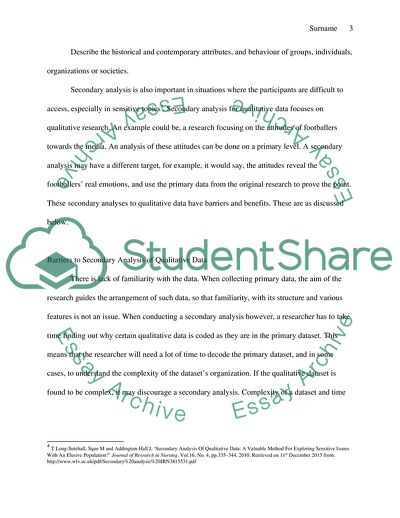Cite this document
(The Principal Barriers to Secondary Analysis of Qualitative Data Report Example | Topics and Well Written Essays - 2500 words - 1, n.d.)
The Principal Barriers to Secondary Analysis of Qualitative Data Report Example | Topics and Well Written Essays - 2500 words - 1. https://studentshare.org/systems-science/1805539-what-are-the-principal-barriers-to-secondary-analysis-of-qualitative-data-why-should-researchers-pursue-this-approach
The Principal Barriers to Secondary Analysis of Qualitative Data Report Example | Topics and Well Written Essays - 2500 words - 1. https://studentshare.org/systems-science/1805539-what-are-the-principal-barriers-to-secondary-analysis-of-qualitative-data-why-should-researchers-pursue-this-approach
(The Principal Barriers to Secondary Analysis of Qualitative Data Report Example | Topics and Well Written Essays - 2500 Words - 1)
The Principal Barriers to Secondary Analysis of Qualitative Data Report Example | Topics and Well Written Essays - 2500 Words - 1. https://studentshare.org/systems-science/1805539-what-are-the-principal-barriers-to-secondary-analysis-of-qualitative-data-why-should-researchers-pursue-this-approach.
The Principal Barriers to Secondary Analysis of Qualitative Data Report Example | Topics and Well Written Essays - 2500 Words - 1. https://studentshare.org/systems-science/1805539-what-are-the-principal-barriers-to-secondary-analysis-of-qualitative-data-why-should-researchers-pursue-this-approach.
“The Principal Barriers to Secondary Analysis of Qualitative Data Report Example | Topics and Well Written Essays - 2500 Words - 1”. https://studentshare.org/systems-science/1805539-what-are-the-principal-barriers-to-secondary-analysis-of-qualitative-data-why-should-researchers-pursue-this-approach.


